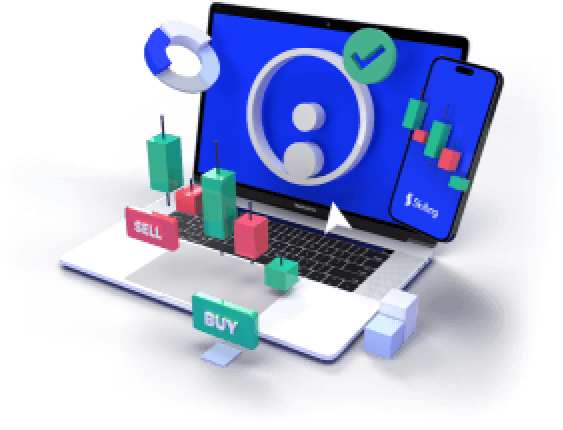Access 1,200+ global CFDs instruments.
Access a plethora of trading opportunities across the financial markets.

Access 1,200+ global CFDs instruments.
Access a plethora of trading opportunities across the financial markets.

Investing in the stock market provides significant financial opportunities, with share purchases being a central component of this venture. Whether you are new to investing or looking to enhance your strategy, understanding how to buy shares is essential.
This guide will walk you through the process of purchasing shares, differentiate between trading and investing, outline effective strategies, and discuss the factors that affect share prices.
The stock market can appear complex due to its fluctuations and diverse options. However, with the right knowledge and resources, you can navigate it with confidence. Buying shares is not merely a transaction but an investment in a company's future and, by extension, your financial future. Therefore, it requires careful planning, research, and a strategic approach.
How to Buy Shares
Purchasing shares opens avenues for financial growth and investment. Whether aiming to build a diversified portfolio or make targeted investments, understanding the buying process is crucial. To begin:
- Select a Broker: Choose a reputable online broker that matches your investment objectives.
- Open an Account: Complete the registration process and submit the required documentation.
- Deposit Funds: Transfer capital into your brokerage account.
- Conduct Research: Evaluate various companies and industries.
- Place an Order: Decide on the number of shares and execute your order.
- Monitor Investments: Regularly review performance and adjust your portfolio as necessary.
Practice with a Demo Account
Try our demo account and experience real market conditions.

Trading vs. Investing in Shares
The stock market offers two primary approaches for wealth growth: trading and investing. Both methods aim to capitalize on market opportunities but differ in their approach, time commitment, and risk levels.
CFD Share Trading
- Short-term: Traders buy and sell shares within brief periods to exploit price fluctuations.
- Active Management: Requires constant market monitoring and swift decision-making.
- Higher Risk: Potential for significant returns, but also greater risk of losses.
Investing in the Underlying Asset
- Long-term: Investors hold shares over extended periods, relying on the company's growth.
- Passive Management: Involves less frequent activity, focusing on long-term stock potential.
- Lower Risk: Generally safer, though it still carries market risks.
Strategies for Buying Shares
- Dollar-Cost Averaging: Invest a fixed amount regularly regardless of share price.
- Value Investing: Purchase undervalued shares with strong fundamentals.
- Growth Investing: Target companies with high growth potential.
- Dividend Investing: Focus on companies that provide regular dividends.
Capitalise on volatility in share markets
Take a position on moving share prices. Never miss an opportunity.

Factors Affecting Share Prices
Company Performance:
A company's financial health and operational success significantly impact its share price. Strong earnings, revenue growth, and positive news can elevate share prices, while poor results or negative publicity can cause declines.
Market Conditions:
The broader economic environment and stock market health affect share prices. Bull markets generally increase investor confidence, while bear markets may result in declining prices. Economic indicators like GDP growth, unemployment rates, and inflation also play a role.
Investor Sentiment:
Market perceptions and collective mood can influence share prices. Positive news or favorable trends can drive prices up, while negative sentiment or uncertainty can lead to declines.
Supply and Demand:
Share prices are driven by the fundamental economic principle of supply and demand. Higher demand relative to supply increases prices, while higher supply relative to demand decreases them.
Summary
Grasping the fundamentals of buying shares is the first step towards financial empowerment in the stock market. By understanding the differences between trading and investing, utilizing effective strategies, and being aware of factors that affect share prices, you can make informed decisions to achieve your financial goals. Patience and continued education are essential for success in share trading and investing.
Ready to Start Trading with Skilling?
Whether you're a novice eager to learn or an experienced trader seeking to refine your skills, Skilling offers a supportive and educational platform to help you succeed. Explore opportunities, gain insights, and take control of your financial future. Your path to trading excellence begins here!











